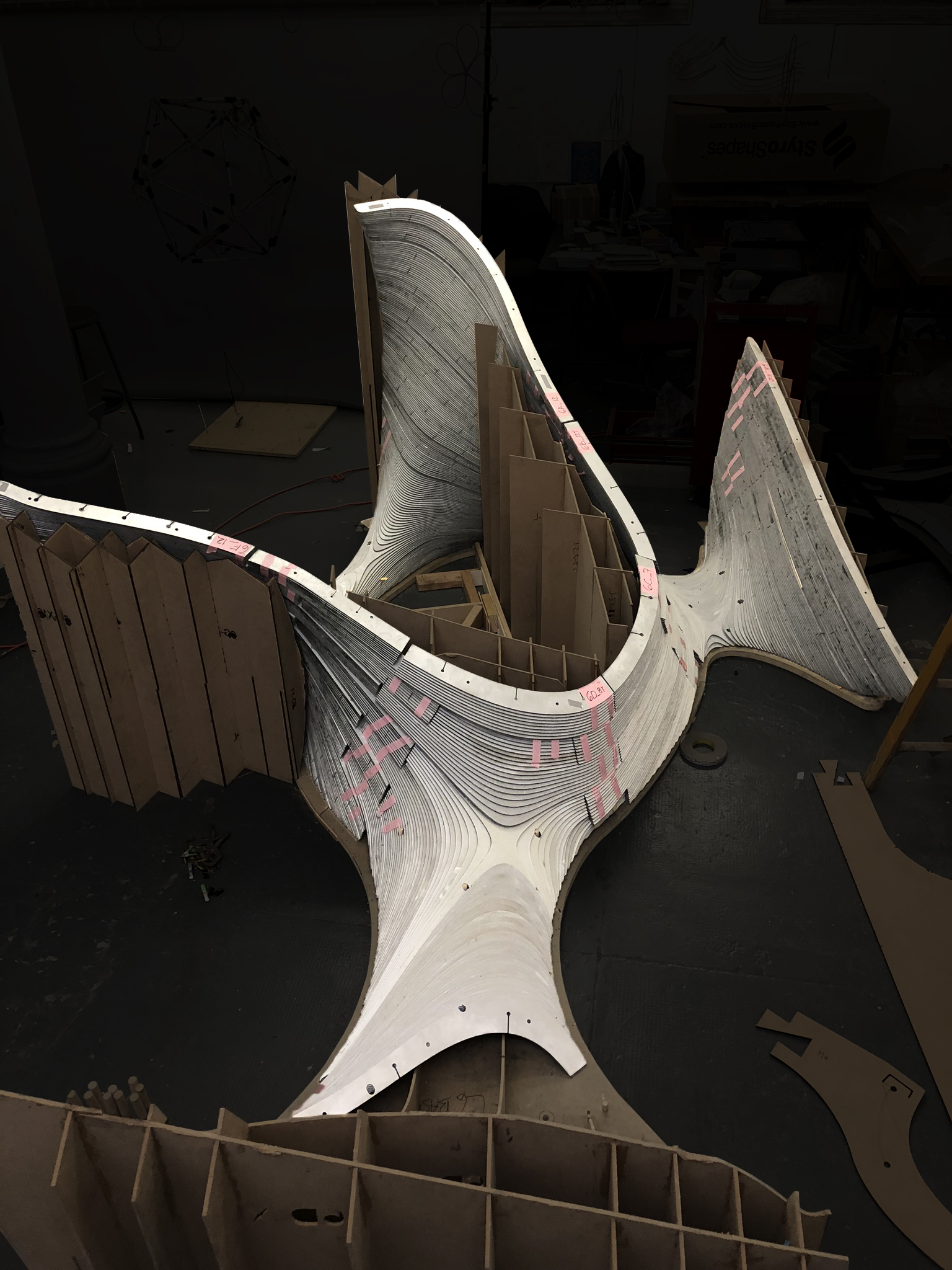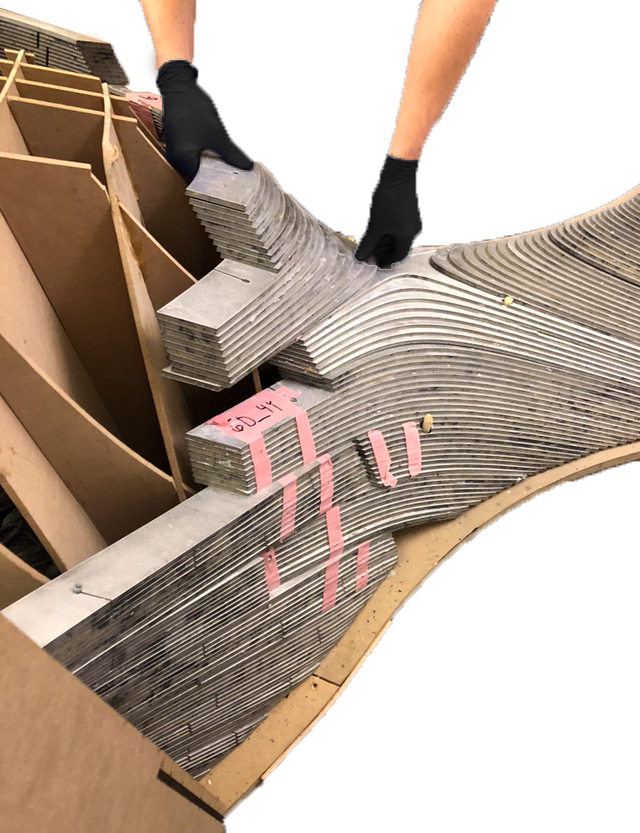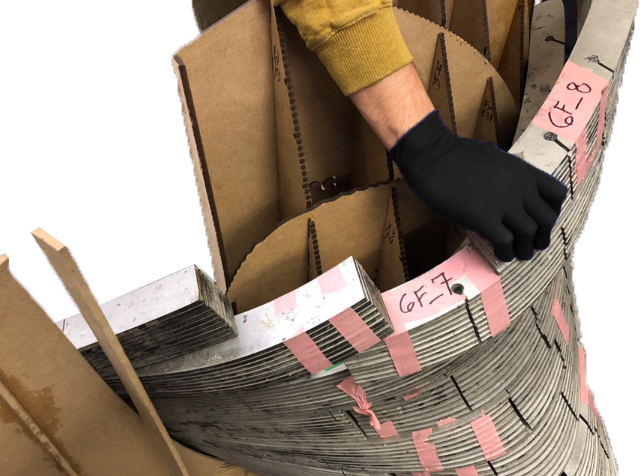HARESH LALVANI 2017-18



3D HYPERSURFACE (PHASE 3, CONTINUED)
We continue the full-scale production of the continuously “curved one-sided hyper minimal surface”. The piece is a laminated contour structure, assembled from water-jet cut Alucobond pieces, 6mm thick, and glued together with a structural glue (Loctite 60 HP). Each piece is indexed sequentially and assembled accordingly. Layer 5, completed last summer, was de-installed and is stored away for final installation on site. Layer 6, the most complex layer, is currently being installed on the ”mdf formwork in our laboratory before it will be moved to the site. The assembly of the contour pieces in this layer is at an angle to the ground plane, unlike other layers. The design of the foundation base plate will be completed soon and fabricated by Milgo at the end of this semester. Layer 4 assembly has begun and is anticipated to be completed by the end of this semester. The remaining layers, Layers 3, 2 and 1, are expected to be completed during the summer. The sequence of the final installation will proceed upwards sequentially from Layer 6, the bottom most portion, culminating in Layer 1, the top most portion.
The challenge has been to match the built surface with the digital model as closely as possible. With each layer, we are refining our method of fabrication to add improvements both in connecting the parts, which now have peg inserts, and the design of formwork which is now becoming a continuous whole. This should have been obvious from the start but our hope has been, and continues to be, to build the surface without formwork. In Layer 3, we expect to redesign the peg connections to make them gravity responsive along with an improved design of formwork towards this goal of eventually constructing the upper layers without formwork. We do not know whether the design of the sequential inter-connected contoured parts, which have structural information embedded in their connections, is sufficient to guarantee the continuous curvature of the structure without the use of formwork. However, we are keen to find the answer.
[Credits]:
Principal: Haresh Lalvani
CES Researcher: Robinson Strong
Undergraduate Students: V.Aboonour, J.Contreras. K.Harris, D.Infante, I.Majekodunmi, M.Malcom, E.Maxwell, A.Miranda, S.Peng, S.Russo, A.Tabbakh, J.Wu
Graduate Students: J.Hamilton, M.Mitchell (CES student assistant)
Structural Engineers: LERA+, Leslie Robertson asso.
Fabrication support: Milgo-Bufkin, M. Fahan, K.Singh